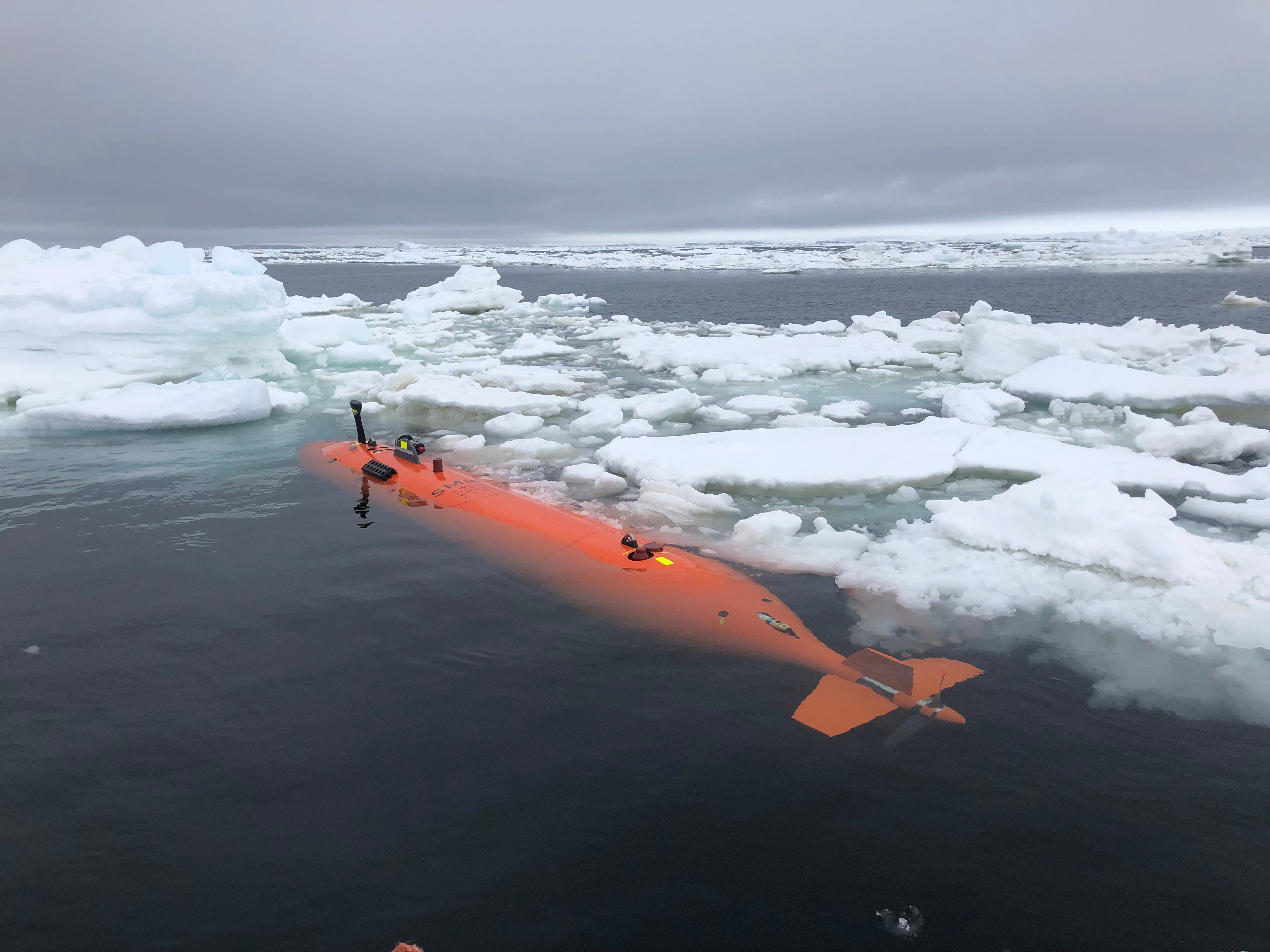Seafloor images shed new light on Thwaites Glacier retreat
The glacier has been an important consideration for scientists trying to make predictions about global sea level rise.

Your support helps us to tell the story
From reproductive rights to climate change to Big Tech, The Independent is on the ground when the story is developing. Whether it's investigating the financials of Elon Musk's pro-Trump PAC or producing our latest documentary, 'The A Word', which shines a light on the American women fighting for reproductive rights, we know how important it is to parse out the facts from the messaging.
At such a critical moment in US history, we need reporters on the ground. Your donation allows us to keep sending journalists to speak to both sides of the story.
The Independent is trusted by Americans across the entire political spectrum. And unlike many other quality news outlets, we choose not to lock Americans out of our reporting and analysis with paywalls. We believe quality journalism should be available to everyone, paid for by those who can afford it.
Your support makes all the difference.Scientists have mapped a critical area of seafloor in front of Thwaites Glacier in West Antarctica in high-resolution for the first time, giving them a window into how fast it has retreated and moved in the past.
The glacier has been an important consideration for scientists trying to make predictions about global sea level rise.
This massive ice stream is already in a phase of fast retreat leading to widespread concern about exactly how much, or how fast, it may give up its ice to the ocean.
Experts suggest a total loss of Thwaites and surrounding icy basins could raise sea levels from three to 10 feet.
Thwaites is really holding on today by its fingernails, and we should expect to see big changes over small timescales in the future...
However, the study indicates the glacier could see big changes over small timescales in the future.
Alarmingly, analysis of the new images indicates that the rate of Thwaites’ retreat that scientists have documented more recently is small compared to the fastest rates of change in its past.
Marine geophysicist and study co-author Robert Larter from the British Antarctic Survey said: “Thwaites is really holding on today by its fingernails, and we should expect to see big changes over small timescales in the future – even from one year to the next – once the glacier retreats beyond a shallow ridge in its bed.”
The images show geologic features that are new to science, and also provide a kind of crystal ball to see into the future of the glacier.
Researchers documented more than 160 parallel ridges that were created, like a footprint, as the glacier’s leading edge retreated and bobbed up and down with the daily tides.
Marine geophysicist Alastair Graham, at the University of South Florida’s College of Marine Science, said: “It’s as if you are looking at a tide gauge on the seafloor.
“It really blows my mind how beautiful the data are.”
The team analysed the formations 700 metres beneath the polar ocean and factored in the tidal cycle for the region – as predicted by computer models, to show that one rib must have been formed every single day.
They suggest that at some point in the last 200 years, over less than six months, the front of the glacier lost contact with a seabed ridge and retreated at a rate of more than 2.1 kilometres per year (1.3 miles per year) – twice the rate documented using satellites between 2011 and 2019.
Dr Graham said: “Our results suggest that pulses of very rapid retreat have occurred at Thwaites Glacier in the last two centuries, and possibly as recently as the mid-20th Century.”
To collect the imagery and supporting geophysical data, the team – which included scientists from the United States, the United Kingdom and Sweden – launched a state-of-the-art orange robotic vehicle loaded with imaging sensors called Ran during an expedition in 2019.
Operated by scientists at the University of Gothenburg in Sweden, Ran embarked on a 20-hour mission to map an area of the seabed in front of the glacier about the size of Houston – and did so in extreme conditions during an unusual summer notable for its lack of sea ice.
Anna Wahlin, a physical oceanographer from the University of Gothenburg who deployed Ran at Thwaite, said: “This was a pioneering study of the ocean floor, made possible by recent technological advancements in autonomous ocean mapping and a bold decision by the Wallenberg foundation to invest into this research infrastructure.
“The images Ran collected give us vital insights into the processes happening at the critical junction between the glacier and the ocean today.”
Dr Graham said it was a ”once in a lifetime mission”, adding that the team would like to sample the seabed sediments directly so they can more accurately date the ridge-like features.
“But the ice closed in on us pretty quickly and we had to leave before we could do that on this expedition,” he said.
He explained that scientists used to think of the Antarctic ice sheets as sluggish and slow to respond, but that is simply not true.
The findings are published in the Nature journal.